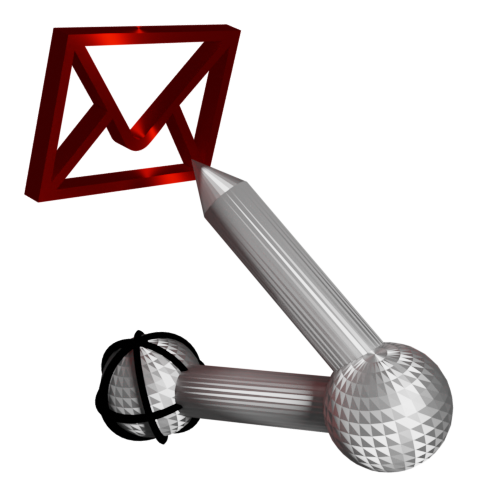AyMINE – Technical documentation
Modules
 Task, project & quality management
Task, project & quality management
Manager approval with the task report
Why some data can't be deleted
Adminitration of areas, projects, calendars
Region / project / methodology
Change management process in a project
GDPR and record of qualifications
Qualification of user or contact
Right to Manage Qualifications
Failure Analysis for an Individual Property of a Component or Process
FMEA – Probability of Detection
FMEA – Probability of Occurrence
 Task, project & quality management
Task, project & quality management
Administration of the Task Management Module
System rights for the task management module
Improvements and Preventive Measures
Methodology and Quality Management systems
What a methodology / QMS consists of
Problems, tickets and their management
Collaborative Resolution of Multiple Problems
Customer Service Response Generation
Incident and Quality Issue Management
Objects affected by the problem
Problems, Incidents, Helpdesk Tickets
Return project plan by baseline
Sample tasks and methodologies of the area
Effect of the task on the right to modify the attached object
The person responsible for the task
Working procedure – task definition
Objects related to the task pattern
 Contacts and directories module (CRM)
Contacts and directories module (CRM)
Order overview for customer groups
 Contacts and directories module (CRM)
Contacts and directories module (CRM)
System Permissions and CRM Module Settings
Send bulk messages in compliance with GDPR
How to correctly forget a person's details
Unsubscribe and set preferences
for bulk mail
 Web management and automation
Web management and automation
Receiving a message from the web
Human resources
Personalistics – User Permissions
Human Resources module security
Manage department / division data
Overview of Personnel Information for pracov# Employment Contract
Synchronizing staff and system users
 Products, assets and sales
Products, assets and sales
Received order for goods or services
Finance management
Metrics and Measurements
Technical Modules
Sabre plugin module
Enterprise Architect connector
Database link to Enterprise Architect database
Enterprise Architect connector
System Modules
 The AyMINE Framework Module
The AyMINE Framework Module
AyMINE — Tips for Mobile Usage
Configure how your system looks and works
Gestures and Keyboard Shortcuts
More about how the system works
Private notes and tags for objects
Overview of Modules and Record Types
Filtering in the list of records
 System Management
System Management
Additional functions with files
Copying and moving files between objects
Files (documents) linked to the object
Formatted texts in the application
Gateway settings for external messages
IMP gateway settings for email communication
Internet Call Gateway Settings
Message with the outside world
 Product or Product Property
Product or Product Property 
Properties describe the status and behaviour of products for analysis, including FMEA analysis
What are Product Properties
Product properties important for analysis are divided into basic groups of functions, operating modes and other specific properties. Specific properties vary according to the product type. For active units, these are e.g. communication interfaces, internal memory properties, etc.
What the description of the properties is for and what it looks like
It is important to describe the properties both within the product definition as part of the specification and for its safety analysis – FMEA.
A good quality product or part specification should include a description of its functionality, working modes as well as any other attributes that affect its functioning.
FMEA risk assessment
Properties are a key input for FMEA assessment. For risk assessment, the key is to assess how each individual property may contribute to endangering or annoying users by not functioning at all, or incorrectly.
For FMEA evaluations, therefore, for each property
- What can potentially happen to the property
- Consider what changes may cause
- Assess:
- S: Severities – How will it affect users
- O: Occurrence – That a problematic situation will occur,
- D: Detection – How easy it is to detect a problem
- Suggest measures to take to reduce the overall risk of RPN (Risk Priority Number)
NRP = product of risk factors
The NRP value, which is the product of severity, probability of occurrence and detection capability, is used to assess the risk of individual factors. NRP = S × O × D. The system calculates the value automatically (the range is 1 .. 1000) and it cannot be entered.
How to record an evaluation
If a property has multiple possible problems and their impacts, always evaluate the worst option within the evaluation.
When measures are proposed, record them in the same item. When measures are approved and included in the requirements, it is possible to(!) subsequently lower the overall rating. Depending on what the safety measures change, one or more of the values S, O, D may decrease.
Measure = Requirement
The measure taken should be recorded as a requirement for the product or manufacturing process. It is important that these requirements have a link from the analysis – only then can it be verified that the measure is actually getting into implementation.
Use the add requirement function to record the requirement – you can attach an existing requirement, but typically you are more likely to create a new one.
How to properly evaluate S: Severity – O: Occurrence – D: Detection
There are standardised tables for assessing the impact of potential damage, which are available in the links below.
Your project may require a different rating! Always follow what is relevant to your project. The examples given are used in the automotive sector, but even in that sector your customer may request their own methodology.
Useful links to sites
Links to useful sites
FMEA Severity Rating
FMEA Detection Rating
FMEA Occurrence Rating